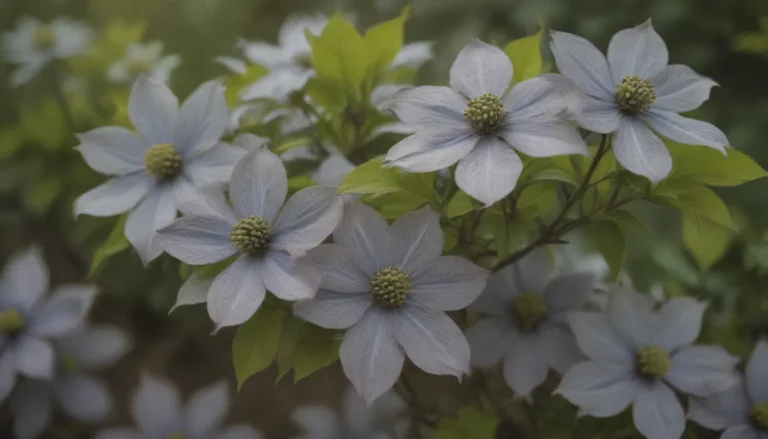Everything You Need to Know About Growing and Caring for Bells of Ireland

If you’re looking to add a touch of green to your garden, look no further than bells of Ireland (Moluccella laevis). These unique annual flowers have been cultivated since the 1500s, long before green blooms became trendy. With delicate white flowers encased in apple-green calyxes on tall stems, bells of Ireland are a favorite among florists for their availability and longevity. Whether you’re planning a wedding bouquet or celebrating St. Patrick’s Day, these plants add a touch of elegance to any arrangement.
Planting Bells of Ireland
Bells of Ireland are generally planted in the spring from seeds. You can either sow the seeds directly in the garden or start them indoors at least two months before the last expected frost. It typically takes 12 to 21 days for the seeds to germinate and sprout, with another two months before they mature into flowering plants.
Bells of Ireland Care
Native to western Asia, bells of Ireland thrive in all zones but struggle in hot and humid summers. To help them cope with the heat, consider using shade cloth. If you can find young plants or plugs at a nursery, it’s worth the investment to see how they grow in your area before committing to a larger patch. Here are some tips for caring for bells of Ireland:
- Stake the plants to keep them upright, especially in windy areas.
- Remove plants once they have finished blooming, but leave them in place for the seeds to mature and self-sow.
- Water consistently, providing about 1 inch of water per week.
- Use a neutral pH soil that drains well and retains moisture evenly.
- Fertilize sparingly, as bells of Ireland don’t require much feeding.
Light and Soil Requirements
Bells of Ireland thrive in full sun, but they also appreciate some morning sunlight to prevent them from becoming too leggy. Make sure to plant them in soil with a neutral pH that drains well and stays consistently moist. Adding compost to the planting area can help provide necessary nutrients for growth.
Types of Bells of Ireland
There are a few cultivars of Moluccella laevis available, with ‘Pixie Bells’ being a popular choice among gardeners. This variety has shorter, sturdier stems that are less likely to topple over when wet. Most gardeners prefer ‘Pixie Bells’ over the original species due to its improved stability.
Propagation and Growing from Seed
Propagating bells of Ireland is relatively easy. You can collect seeds from drying flower heads and save them for planting the following spring. Alternatively, transplanting self-seeded volunteers from the garden is another way to propagate these plants.
When growing from seed, plant bells of Ireland after the last frost date in your area in average garden soil. Seeds require light to germinate and can take 12 to 21 days to sprout. Starting seeds indoors two months before the last frost date can lead to earlier blooms.
Harvesting and Drying
Bells of Ireland flowers are ideal for drying and adding interest to fresh-cut arrangements. Cut the flowers when the bells are about half open for fresh bouquets and wait until they’re fully open and firm to the touch for dried arrangements. Keep in mind that the flowers will gradually lose their green tint and turn tan as they dry.
Potting and Pests
Bells of Ireland make great container plants and are best planted in the center of a large container surrounded by colorful mounding and trailing annuals. Water the container regularly and avoid repotting the plants as they don’t respond well to transplantation.
While bells of Ireland are relatively low maintenance, they can be susceptible to cerospora leaf blight and crown rot. Additionally, aphids and spider mites may occasionally pose a problem, but overall, these plants are hardy and easy to care for.
In conclusion, bells of Ireland are a versatile and unique addition to any garden. Their striking appearance and longevity make them a favorite among florists and gardeners alike. By following these care tips and guidelines, you can enjoy beautiful green blooms in your garden for years to come. Happy gardening!





